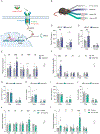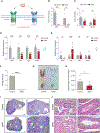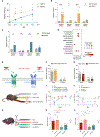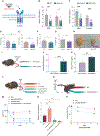Muscle-derived myostatin is a major endocrine driver of follicle-stimulating hormone synthesis
- PMID: 39818879
- PMCID: PMC12199281
- DOI: 10.1126/science.adi4736
Muscle-derived myostatin is a major endocrine driver of follicle-stimulating hormone synthesis
Abstract
Myostatin is a paracrine myokine that regulates muscle mass in a variety of species, including humans. In this work, we report a functional role for myostatin as an endocrine hormone that directly promotes pituitary follicle-stimulating hormone (FSH) synthesis and thereby ovarian function in mice. Previously, this FSH-stimulating role was attributed to other members of the transforming growth factor-β family, the activins. Our results both challenge activin's eponymous role in FSH synthesis and establish an unexpected endocrine axis between skeletal muscle and the pituitary gland. Our data also suggest that efforts to antagonize myostatin to increase muscle mass may have unintended consequences on fertility.
Conflict of interest statement
Figures





References
-
- Sun L et al. , FSH directly regulates bone mass. Cell 125, 247–260 (2006). - PubMed
-
- Kumar TR, Wang Y, Lu N, Matzuk MM, Follicle stimulating hormone is required for ovarian follicle maturation but not male fertility. Nature genetics 15, 201–204 (1997). - PubMed
-
- Kliesch S, Behre HM, Nieschlag E, Recombinant human follicle-stimulating hormone and human chorionic gonadotropin for induction of spermatogenesis in a hypogonadotropic male. Fertility and sterility 63, 1326–1328 (1995). - PubMed
Publication types
MeSH terms
Substances
Grants and funding
LinkOut - more resources
Full Text Sources
Molecular Biology Databases

